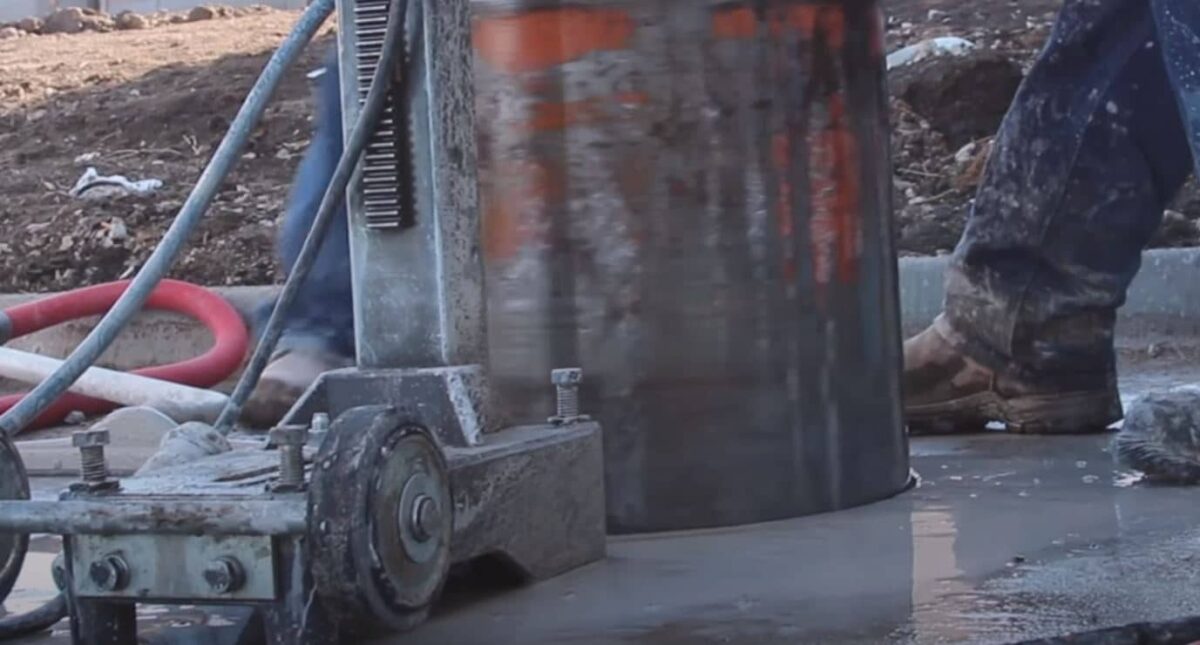Concrete Coring is a fundamental process within the construction industry, involving the precise removal of cylindrical sections of material, often concrete. This technique plays a crucial role in structural testing, installation of wiring or plumbing, and various other construction applications. In Auckland, where the demand for modern infrastructure is continuous, understanding the intricacies of coring and concrete drilling, including the two primary methods – wet and dry concrete coring – is vital. These two techniques, each with their distinct benefits, risks, and exceptions, cater to different materials and environmental conditions, providing flexibility and efficiency in construction tasks.
Wet Coring
Wet coring, typically used in concrete cutting, is a procedure where water is utilised during the drilling process. This method provides several key advantages, particularly when dealing with robust construction materials.
Health and Safety Aspects
Water serves as a cooling agent, reducing the heat produced by the friction during the drilling. It prevents the drill bits from overheating, extending their lifespan. Additionally, the water helps suppress dust, protecting workers from potential respiratory issues.
Risks
If not managed appropriately, the water used in wet coring could lead to slips and falls at the worksite. Proper management of wastewater is crucial to avoid these accidents.
Exceptions
In certain scenarios where electrical hazards or frost might be a concern, wet coring might not be the ideal approach.
Dry Coring
Dry coring is the process of drilling without water. It’s commonly used where wet coring is either impractical or poses a potential risk.
Health and Safety Aspects
Since no water is involved in dry coring, the risk of slips and falls is minimized. However, dust management becomes a critical concern, and proper safety equipment such as masks must be used.
Risks
Excessive heat can build up during dry coring, which can lead to the premature wear of drill bits. The presence of dust may lead to health issues if not properly controlled.
Exceptions
Dry coring may not be suitable for some materials that are more susceptible to heat damage. Proper assessment must be done to determine the right method for each application.
Key Takeaways
- Wet Coring: Utilises water to cool the drill bits and suppress dust. Best suited for robust materials but poses risks related to water management.
- Dry Coring: No water is used, minimizing slip risks, but dust management and heat build-up become significant concerns.
FAQ Section
- Q: Can both wet and dry coring be used on the same material? A: It depends on the specific material and application. Proper assessment is vital to determine the most suitable method.
- Q: What equipment is necessary for dry coring to handle dust? A: Dust extraction systems and personal protective equipment, such as masks, are typically required to manage dust during dry coring.
- Q: Is wet coring always safer? A: Not necessarily. While wet coring can suppress dust and cool the drill bits, improper water management can lead to accidents.
Scientific References
The engineering behind concrete coring involves understanding the material’s composition, determining the most appropriate drilling technique, and using precisely engineered tools to ensure the job’s success. Principles from materials science and mechanical engineering, such as thermodynamics and material stress analysis, play vital roles in these processes. Key literature in this field includes:
- S. Timoshenko, “Strength of Materials,” in Engineering Mechanics, 3rd ed., Vol. 2.
- Y. Cengel, and M. Boles, “Thermodynamics: An Engineering Approach,” 8th ed.
By diving into the core (pun intended) of both wet and dry coring, anyone in the Auckland area interested in the construction or renovation industry can gain a comprehensive understanding of these two critical processes. Both methods come with their own set of considerations and must be chosen with attention to the specific requirements of each project. If you’d like to know more reach out to the team at Concrete Cutting Auckland today.

